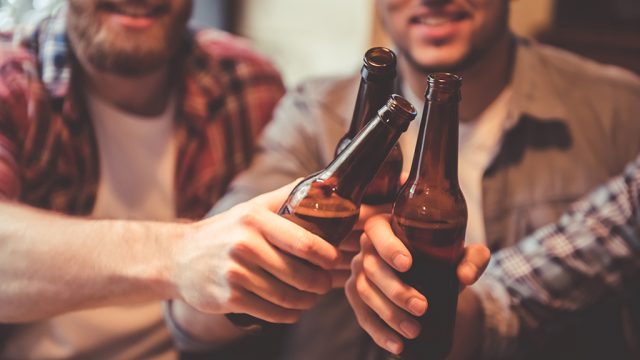The Secret Reason Why Beer Bottles Are Brown

Beer connoisseurs around the world can tell you the acidity level, hoppiness, and provenance of their favorite brew. However, when it comes to the vessels those precious suds are housed in, the reason behind the virtually ubiquitous brown glass bottle isn’t as clear. That said, it’s more than just aesthetics keeping brown the preferred color of brewers and bartenders around the world—opting for a different color bottle could change your drinking experience entirely.
Making the switch
While beer is one of the oldest drinks known to man, makers only began bottling their craft brews beginning in the 19th-century, when they discovered that this method could keep the beer fresh over a longer period of time. In fact, according to Business Insider, before beer was stored in brown bottles, it was housed in clear containers, which would actually begin to smell “skunky” after a while under any direct sunlight, since the UV rays actually worked to alter the flavor of the beer.
“Most Americans don’t know that anything stored in clear or blue glass—or anything that isn’t brown—can skunk your beer, and, unless you’re using special hop extracts that are immune to becoming lightstruck, everything you pick up in those bottles will be off,” adds certified Cicerone Zach Mack, owner of Alphabet City Beer Co. in New York.
So, in order to preserve the flavor of the beer and make it last longer, brewers had to find a creative answer. Enter: brown beer bottles.
So, why brown?
By the end of World War II, glass bottles were the most popular way to transport this beloved substance, and, in most cases, brewers chose brown bottles over clear containers, since this darker color was proven to block out the UV rays that could harm the taste and smell of the beer inside. These UV rays negatively affect the alpha acid in the beer’s hops, which causes the flavor to become sourer in nature, according to beer expert Nate Schweber.
However, another color could soon be dominating the market
While many brewers are quick to point out the many ways brown bottles have changed the industry, a small but mighty minority of brewers are seeing another color in their future: green.
“While green bottles permit the risk of light struck/skunky character, I feel they add character, even beyond skunkiness. So many breweries have attempted to mimic the classic Saison Dupont yeast profile, and I feel what is most often missing is the light struck character that is integral to the profile of that beer,” said Garrett Crowell, head brewer at Austin, Texas-based Jester King.
And while flavor may play a role in the resurgence of green glass, it’s not the only reason this potentially-perilous bottle color is making a comeback. “It has everything to do with marketing and standing out on the shelf,” says Mack, who notes there’s a certain nostalgia associated with green glass, as well. “That was actually one of the original reasons they did it.” And when you want to enjoy something a little more flavorful than your average ale, set your sights on The Best Craft Beer in Every U.S. State.
To discover more amazing secrets about living your best life, click here to follow us on Instagram!